Podcast: Play in new window | Download
Welcome back to East Asia. Taiwan hasn’t changed too much since your last visit. In case you’ve stumbled upon this without reading part one, you can catch up by clicking here.
Day 6 (191km)
Our goal today was to make it to Tainan on the southwestern coast of the island (letter E in the above map) in time for first pitch. You see, the Tainan Unipresident 7/11 Lions had a huge game that night against Lamigo Monkeys, and first pitch was a 6:35pm. I’m being facetious regarding the importance of the game, but the team names are all too real.
After the highway/tow truck/paddy-wagon incident a few days earlier, we wised up to the fact that we were not welcomed on the major highways of Taiwan. The good news was that we avoided another run-in with law enforcement. The bad news was that our three hour drive more than doubled, taking us on side streets, along canals not designed for motorized vehicles, and through dozens of Taiwanese towns.
This wasn’t as poetic as it may seem. Stop-and-go motorcycling is far from exhilarating, and the situation doesn’t improve when you arrive in a city during the midst of rush hour. We were hot, sore, sun-burned and ready to be off the bikes.
Travel is too often romanticized.
But we ventured through and made it into the stadium for the second inning. From here, I’ll let images and video do the talking.
Each player on the home team has their own chant, and the cheer squad leads the crowd in these songs during entire at bats. Notice in video above that the game is casually still in progress. There was a 12-pitch at bat at one point — that particular cheer will be ingrained in my mind forever.
Day 7 (146km)
Tainan is the original capital of Formosa Island, another name for Taiwan. Nowadays, it is known for its ancient temples and its food culture. Regarding the latter, you’d be hard-pressed not to find sugar added to almost every dish. As the story goes, sugar was a sign of wealth for the upper-class in generations past, and the citywide sweet-tooth remains today. Pork breakfast burritos with a spoonful of sugar (literally), beef noodle soup with what tasted like a ladle of sugar, and bao buns with — you guessed it — sugar, highlighted our food tour the following morning before we moved southwards towards Kenting, the southern tip of the island known for its beaches.

Down the west coast we went, stopping a few hours later at one of the many massive restaurants designed for tour groups. (You may begin noticing a culinary theme. Food allows visitors to find their way into the heart, and hearts, of a culture. Plus, riding makes you hungry.)
A good majority of these eateries in Taiwan feature whole chicken roasted in bigger than human-clay pots. Knives are not a feature of these restaurants and are replaced with two sets of gloves, the first of which is meant to keep you from burning your hands, and the second designed to keep the first layer clean. As a self-proclaimed whole roasted chicken fiend, I write confidently and with authority that pulling apart a chicken with gloves is way more fun than using a knife.
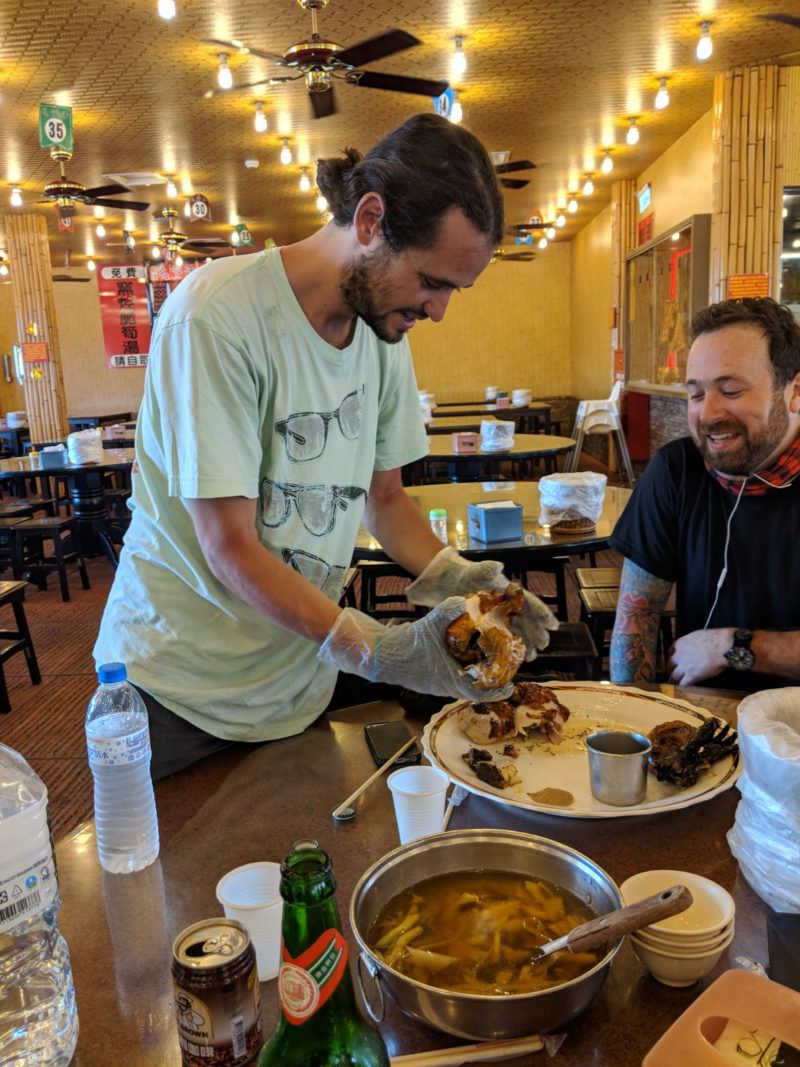
Continuing south we had a first glimpse of the Taiwan Straight and followed this route all the way to the Hengchun Township (letter F), the largest of towns in the Kenting area. Shortly before arriving in Hengchun we sadly had to say our goodbyes to Chase, who cut off east and began making his way back to Taipei.
And there we were, four westerns on motorcycles with zero mandarin language skills and over 500kms to go. What could go wrong?
That evening we revamped the dumpling portion of the tour. Only a few doors down from the Rainbow Wave Surf Hostel, our home for the next two nights, was a street vendor rolling and steaming handmade dumplings. We took it easy that night with six baskets.

Day 8 (32km)
An off-day of riding — well, point A to point B riding — to reclaim feeling in our crotches and tour the beaches dotted around the southern most point of Taiwan. Our first stop was to the Jialeshuei Waterfall Scenic Area. I’ll put this experience into the “so unmemorable that I’ll never forget it” category. We were led onto a tram that may have been a recycled shuttle used ushered Disneyworld guests from the parking lot to the park’s front gate. Along with maybe 20 other Chinese tourists, we were shown the coastline and its interesting rock formations.
As it was a guided tour, there may have been some uniqueness to this stretch of coast. As said tour was in mandarin, we’ll never know. And the waterfall itself? Trickle would be an overstatement. I’ve created a heavier flow myself after drinking two bottles of water.

Next on the days agenda was a stroll over the Gangkou Suspension Bridge that lead to a botanical garden/park/farm area? In hindsight, I have no idea what this place was, but it hugged the beach and we were feeling refreshed after ordering a few mango-beers at the small restaurant adjacent to the bridge.
(It was a a blended mango mixed with a beer. Come on…I know that your only take-away from the prior paragraph was “What the hell is a mango-beer?”)
By this time, we felt we’d done enough sightseeing, and the remainder of the day was spent at Little Bay Beach in Kenting.

It was a truly fine afternoon at the beach, and there was only one thing that could drag us away from our small perch of sand. Those hand-rolled, pork and spring-onion, steamed pockets of joy.
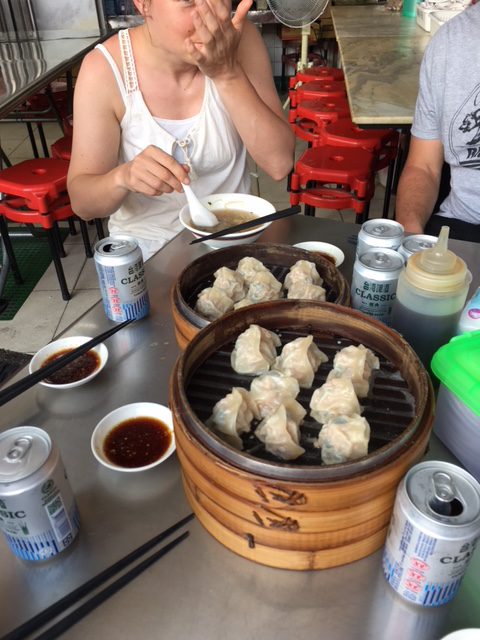
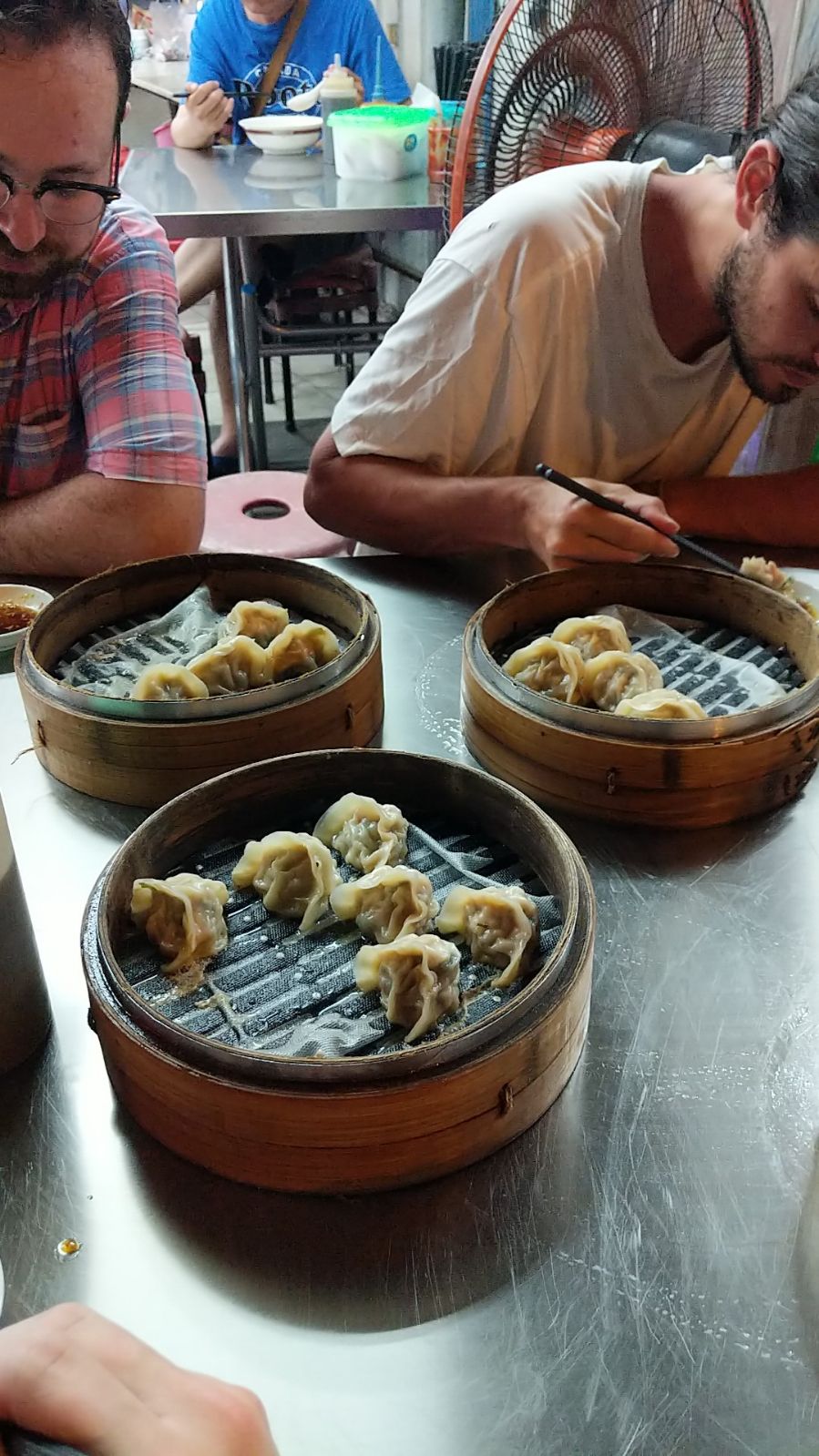
It became something of a competition to see how many dumplings we could take down. The look on the face of the chef/steamer each time we motioned for another basket was one of surprise and joy, with a hint of disgust at our gluttony. We landed on eight baskets that evening.
Day 9 (~40 nautical miles)
Throughout the trip, we’d heard whispers of Lanyu Island (also known as Orchid Island) from fellow travelers and Taiwanese locals. The voices grew louder as we motored further south, so we reserved our place on the 1pm ferry from Houbihu in Kenting to Lanyu.
The seas were angry that day my friends, and it required total mind/body focus to avoid motion sickness. The gentleman to our right wasn’t as lucky and was heaving — on and off for the entire two hour trip — as loudly as one can heave. Frustration, agony, sympathy — fortunately, no empathy.
We and our bikes made it in one piece and with everything in tact (inside and out). At first glimpse, we knew we’d made the right decision.
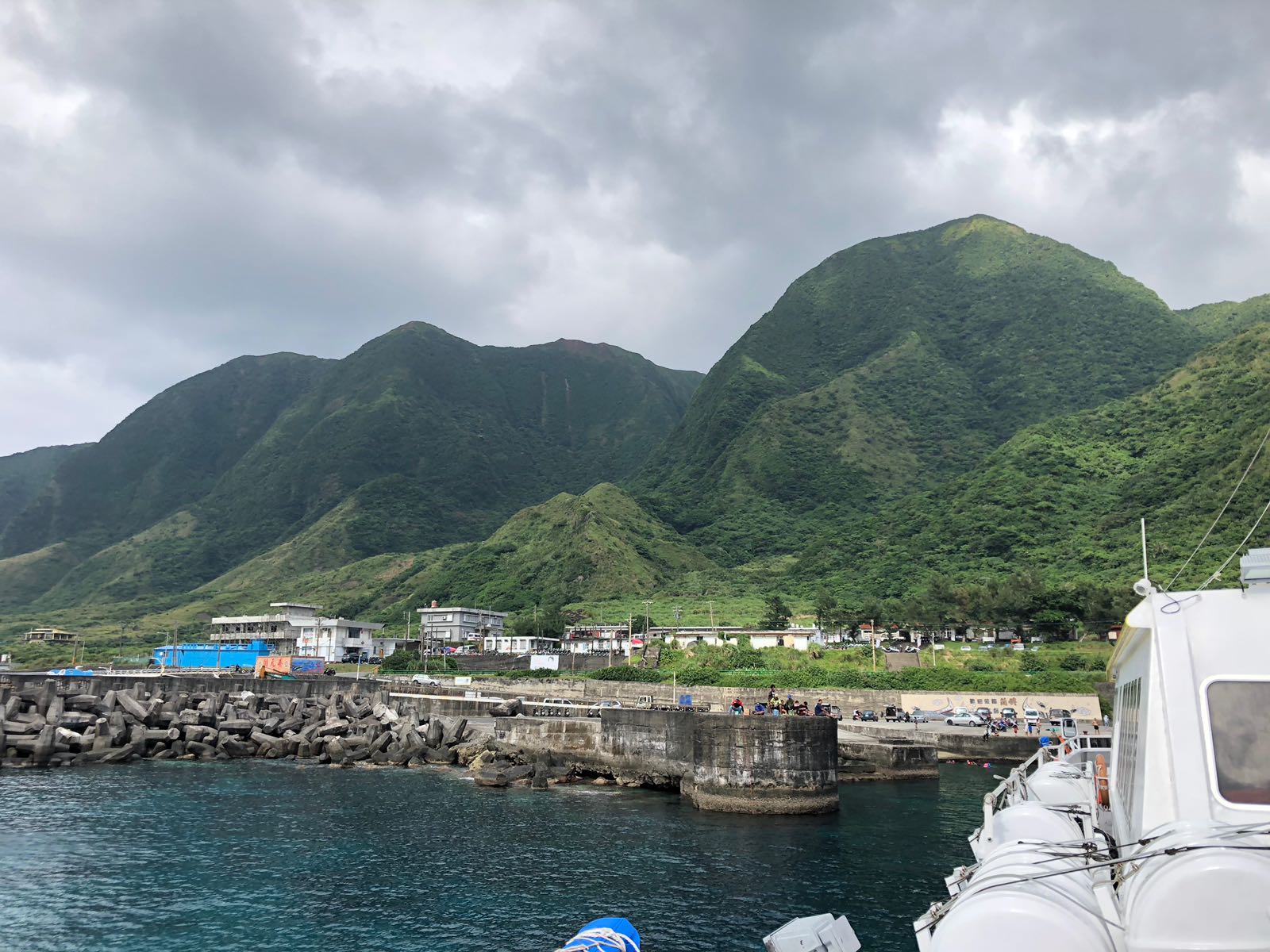
Lanyu Island has been home to an aboriginal people known as the Tao for hundreds of years. Only recently has tourism found its way to the island, yet the authenticity and many traditions still remain. This is best represented by the local rule that visitors are not welcomed to swim outside of a few designated areas on the island. The Tao people rely heavily on flying fish as their source of food and they fear that human negligence (ie: irresponsible tourism) will diminish the flocks of fish that swarm the island each season.
At times, we’d felt we had landed in another world. Don’t be surprised if Jurassic Park IX is filmed here in 15 years.
Day 10 (35km circumnavigating the island)
Without the heaviness* of our packs on the back of our bikes, we set along the road that crops the radius of the island. (*Heaviness both physically and metaphorically. There is an added level of caution when motorcycling with a pack strapped to the passenger seat.)
Only minimal English is spoken on the island. The majority of those that we met who did have command of the language were ex-pats from Taipei, Hong Kong or Japan who had left their workaday path to pursue a more holistic, nature-driven approach to the dance that is life. Americans have Sayulita and Cabo. Asians have Lanyu.
In recent years there has been a staggering decrease in the number of aboriginals on the island. As children get older they venture to mainland Taiwan to study and often choose to plant new roots in their adopted city. This is compounded by an increased number of tourists each passing year, and collectively one is left to wonder how the Tao people will survive into future generations if these trends continue.
Sustainable tourism too often focuses its attention on resource and habitat consequence (ie: trash, water usage, carbon footprints, etc.). More concerning is the loss of culture. It’s a catch-22 — travelers come to visit unique and faraway communities, and in doing so inadvertently diminish the authenticity of their destination. I’m as guilty as anyone in polluting this issue even further, I admit, but there must be a way to reverse the course. Cultural sustainable tourism
And with that, we leave the public service announcement and returned to the regular scheduled blog post about four millennials gallivanting around Taiwan on two-wheeled machines.
…Annnd, Ive lost my train of thought. I’ll allow photos to do my writing here. Lanyu Island is easy on the eyes.
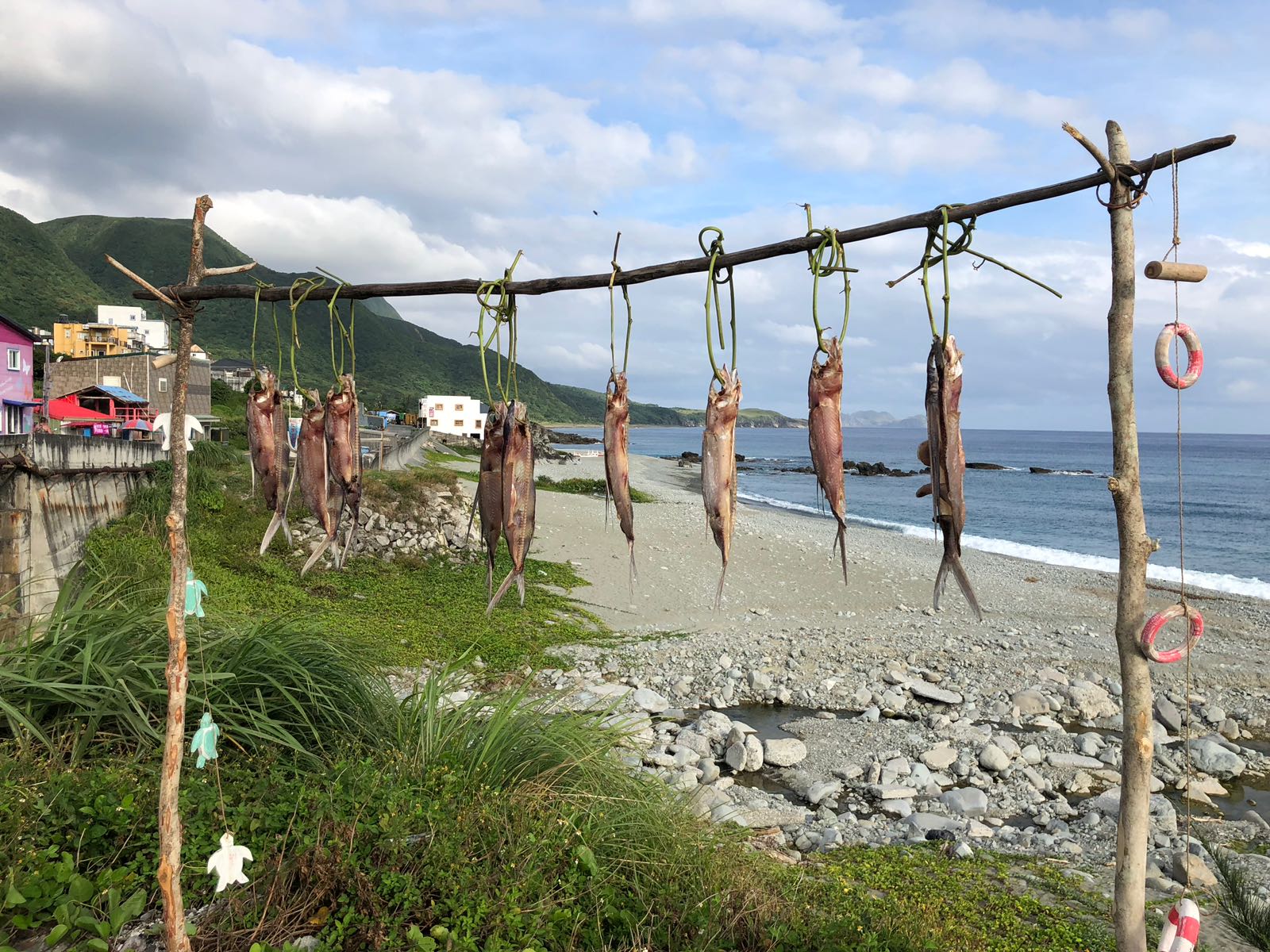
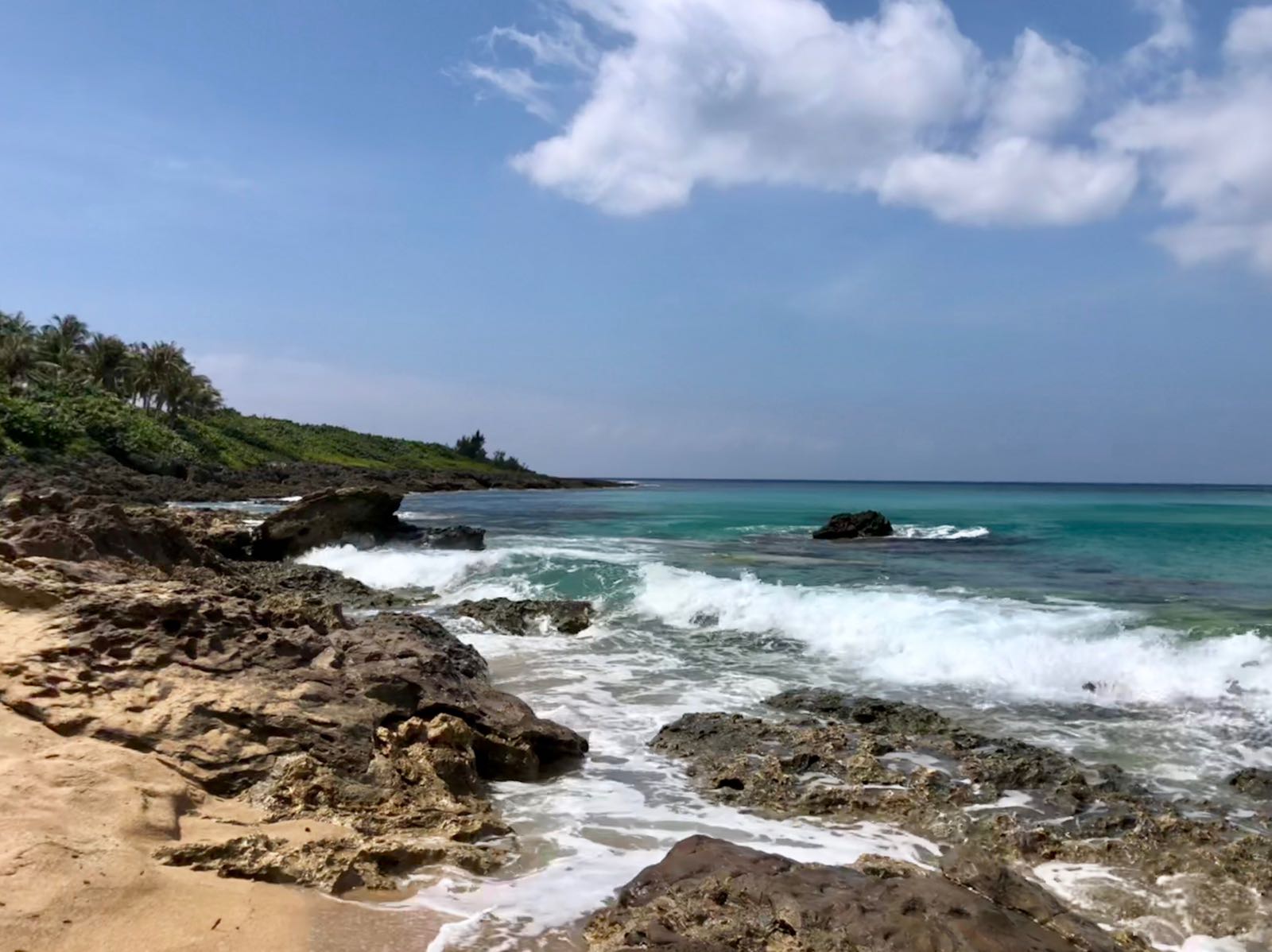
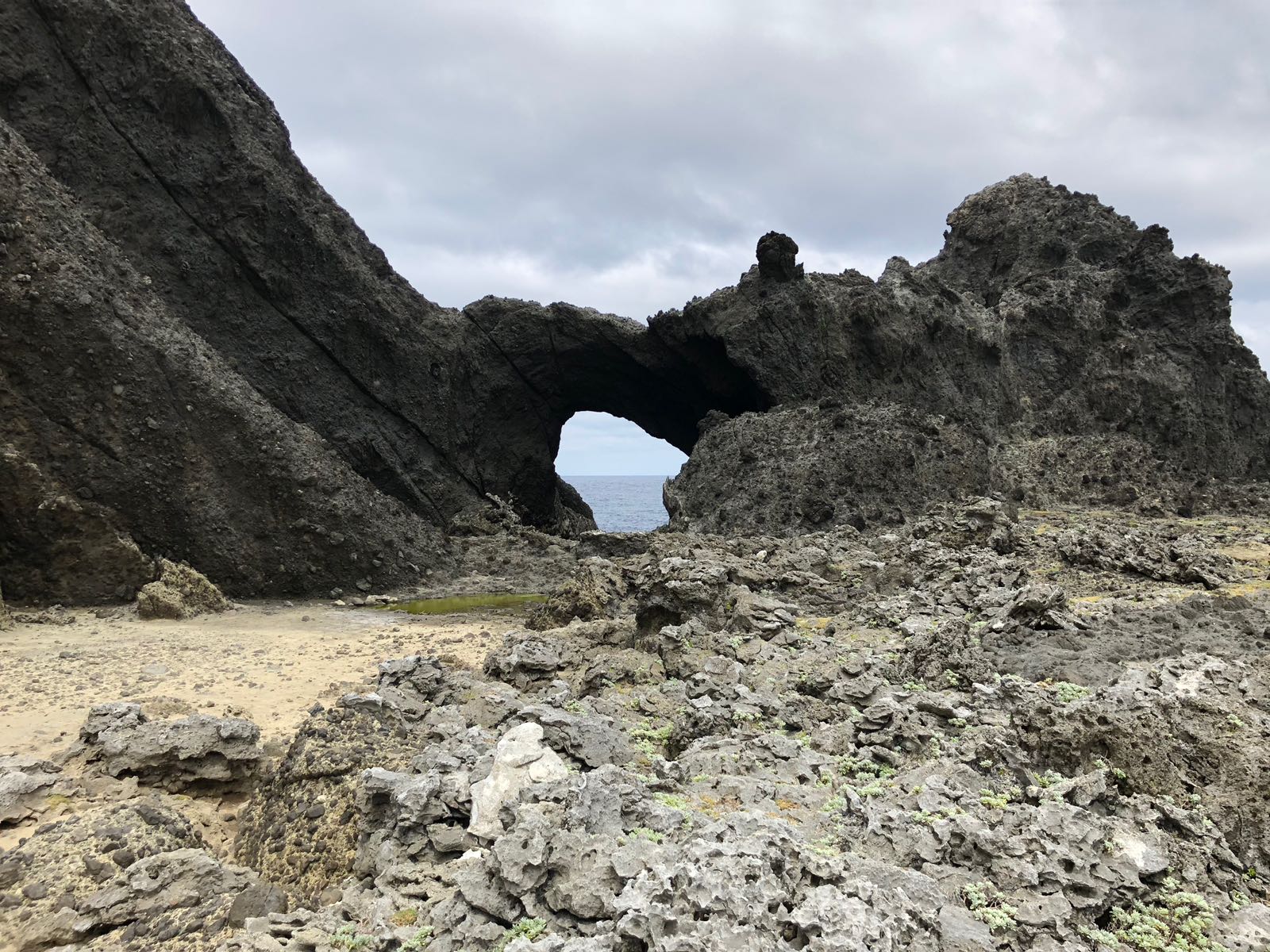
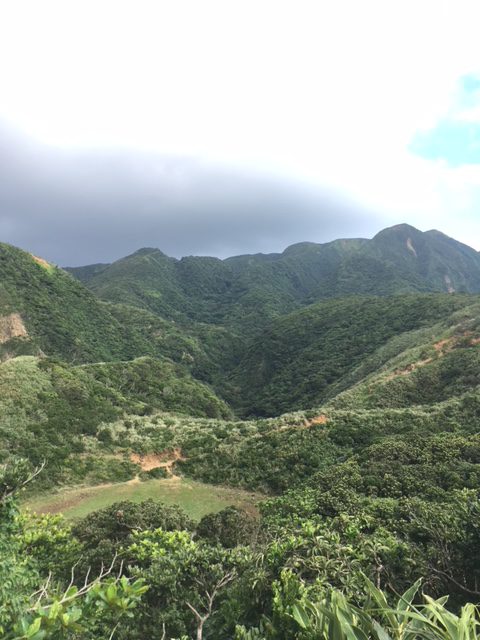
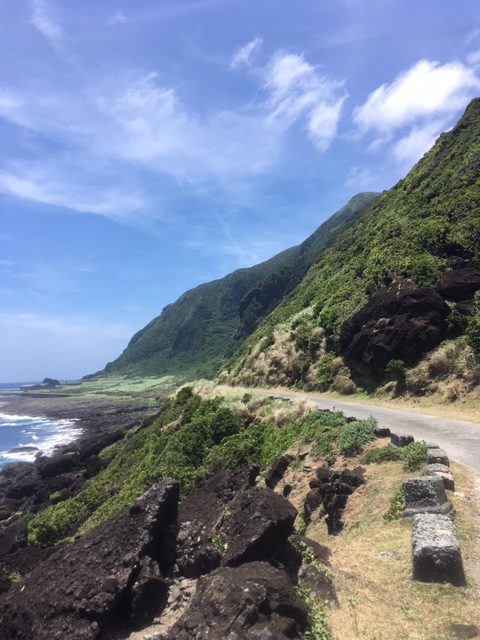
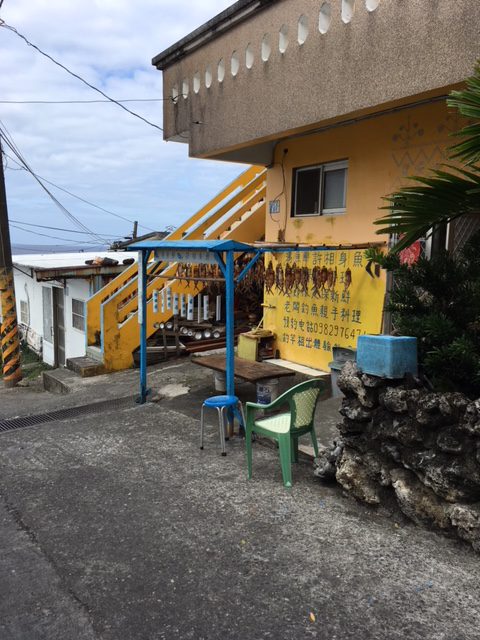

Day 11 (49 nautical miles and 19 road km)
Our ferry to back to mainland Taiwan was scheduled for later in the afternoon, and we began the day with breakfast at a small restaurant called YaKen we had stumbled upon the day prior. What brought us back a second time was a dish they had labeled “green bomb.” I can’t give any specifics as to the ingredients, but the base layer was essentially a pancake-crepe hybrid colored by what we only hoped was seaweed or a green vegetable. Atop this somehow appealing pastry was a white cheese, seaweed flakes and an over-medium egg. It tasted bomb, and most importantly didn’t leave our butts exploding later on. (We’re all adults here.)
With hours to kill, we hopped on our bikes and pointed towards the weather station, one of the highest viewpoints on the island and only about two kilometers off the only road that crossed through the middle of Lanyu. There was indeed a weather station which also tracked seismic activity, but more surprising atop this summit were the ruins with roots dating back to World War II.
Further afoot was a platform, on a faraway part of a faraway island, with a sign asking visitors to remove their shoes. Introspection comes from the unlikeliest of places, and on this platform we sat, in silence and in conversation, looking west over the Pacific. I write often of peaks and valleys in traveling, the gradual ebbs-and-flows of life at home that become steeper and more staggered on the road.
And so we sat, looking. Wondering. Lost, and ever so found.
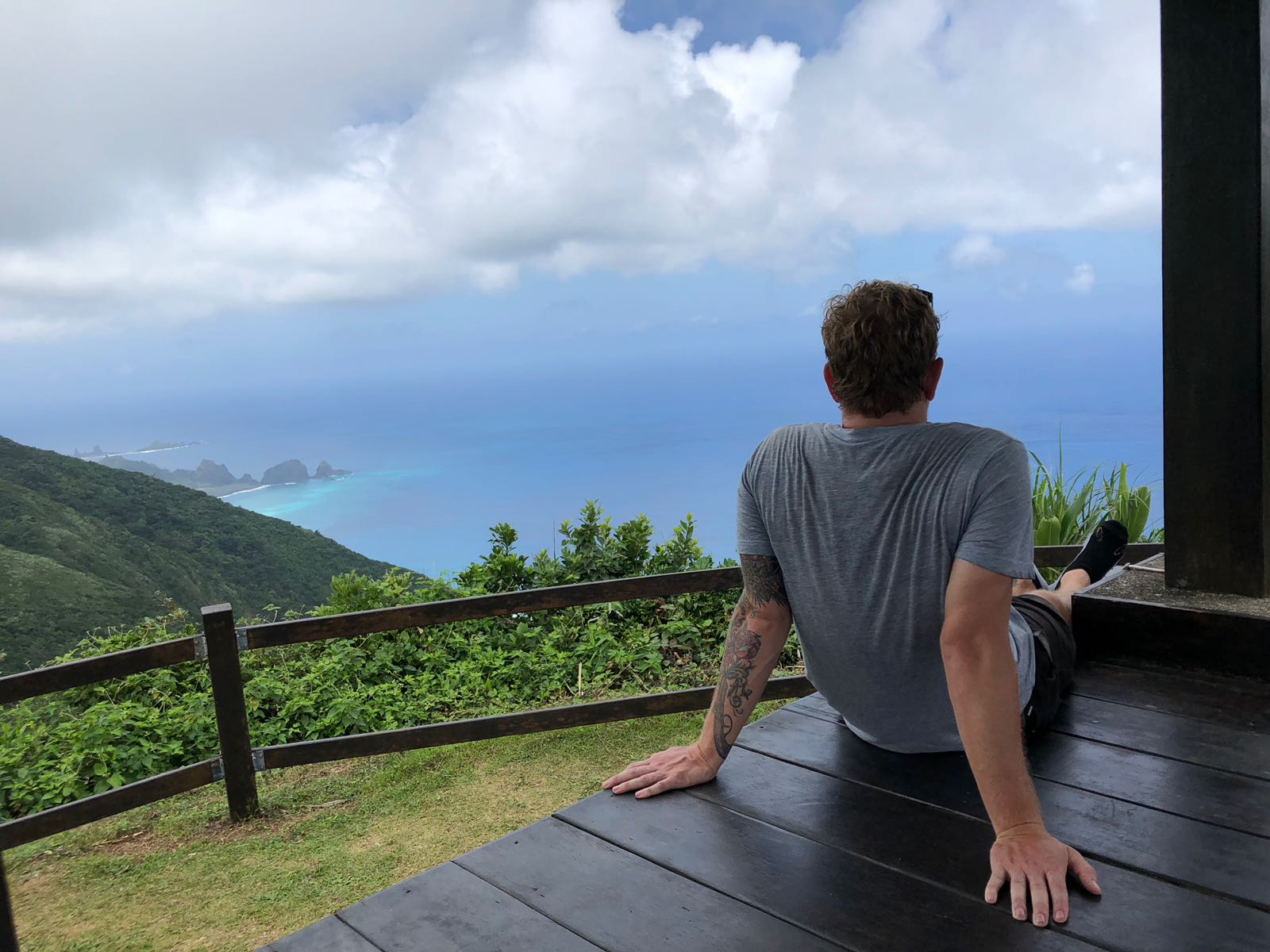
The ferry leaving Lanyu Island was a lot less eventful, with calmer seas and a bigger boat. This voyage stopped off at Green Island, something of an older brother to Lanyu with more development and tourism despite its smaller size, before continuing west to Taitung, a small city on the southeast coast of Taiwan. Unready to tackle another city, no matter how small, we ventured 15 minutes north and made arrangements at the Backpacker Dog Hostel small surfing village of Dulan.
Dulan isn’t more than a few streets, but its proximity to surf and southern bookend of the east coast of Taiwan forces many westerns to stay for extended stays.
The dumplings around town were not homemade.
Day 12 (162km)
We’d been anxious to travel the east coast. Even with minimal research prior to the trip, the east coast seemed to beckon constantly as the place to be, especially when traveling on motorcycle.
Highway 11 hugs the east coast almost the entire length of the island. As with many roads throughout the country, there is a separate lane for motorcycles and scooters, which allows that extra bit of safety and confidence needed to gawk at the sea and the small fishing communities that dot it.
East Taiwan is prone to seeing heavy rains and typhoons during the wet season (July to September), and even during calm weather the sea pounds hard against the coast, leaving an almost endless flurry of rock formations and cliff-side overviews. The views are spectacular, and just when you’re just starting to get bored at the sight of black rock slaying upwards from the sea, out comes a flatness where a black sand beach appears. It was like this this for miles on end, the rocky coast to our right and the mountains and it’s low-laying clouds to the left. If only our packs had eyes from the passenger seat.
Our pit stops that day included:
- an early lunch at Southeast, a Vietnamese/Thai/Indonesian fusion restaurant just outside of Dulan,
- a cliff-side scramble and cliff-jumping Shitiping, a small beachside park,
- and beers and cards at a small resort north of Shitiping which shall remain nameless (if it even had a name)
Four or five hours after leaving Dulan, we rolled into the city of Hualien and to the newly opened Travel Charger Hostel. Our priorities upon arriving were two-tiered: shower, and go straight to the food market.
Opened in 2015, the Dongdamen Night Market is way more organized compared to its counterparts in other areas of Taiwan. In some ways, the newness hurt its genuineness. Symmetry and straight lines aren’t common adjectives used to describe night markets.
Luckily, taste knows no shapes. Seafood took centerstage as the entree night, with Taiwan sausage wrapped in a tortilla-like rice patty, fried rolled dough, and roasted corn-on-the-cob satisfying the appetizer and dessert section of the meal. Speaking of dessert…
Dongdamen Night Market had rows of carnival style games near its entrance, along with dozens of claw crane arcade games. You know, the ones where you control the claw with a joystick and push the button to drop said claw over a stuffed animal or some other useless prize?
Claw crane games were all over Taiwan. There has to be over 100,000 claw crane games on this small island. Anyhow, we decided to try our luck at one of these claw crane games on our way out of the night market. The stuffed animal we targeted, with its fat head and skinny neck, seemed destined to be clawed. Attempt 1 failed. Try 2 was closer, but unsuccessful. Before our third try, a gentleman appeared with a key to the game, opened its front window, and placed the stuffed animal in a position that would make success almost inevitable. The coin was inserted with a click into the slot and the lights shined down, reflecting off the mirrored backing of the game. With the precision of a tenured crane operator at the Port of Los Angeles, the crane slank down through the air, closed with a stranglehold over the target, and reversed course back towards its home over the winners basket. WINNER.
Without so much of a thought, the man who opened the machine took the stuffed animal, placed it back in the machine, and awarded us with our prize. Sliced cantaloupe.
On the walk back to the hostel, we stopped for dumplings.
Day 13 (~40km)
Throughout the last few days, I had been trying without success to secure permits to hike the Jhuilu (Zhuliu) Old Trail in Taroko Gorge. Taroko is one of the more well known hiking areas in all of Asia, and the Old Trail is said to be the best of the best. The parks department limits the number of hikers to under 100 on weekdays and between 150 and 200 on weekends. The permitting is completed online, and despite being the digital process is still a pain in the ass. After submitting a half-dozen applications over three days and exchanging a handful of emails with someone in the parks department, we were granted our permits for Tuesday, May 8th (or day 13, for those of you keeping track).
Sure enough, after almost two weeks of nearly perfect weather we awoke to the pitter-patter of rain on the skylight of our hostel. But I was determined.
The heavily controlled trail head allows hikers onto the Zhuliu Old Trail from 7:00am to 10:30am, and it was a race against time after the indecision earlier in the morning. Even after being granted the elusive permit, it is required of all hikers to stop in the Taroko Gorge police station and obtain a secondary permit. The limitation of hikers certainly helps prevent erosion, but to-date no gold or jewels have ever been found on this trail. There must be a better way (see sustainable tourism rant above).
Racing around the curves of the gorge, I arrived to the trailhead with two minutes to spare and began the 3.1km trek. The rain had halted to a near-mist, and towards the top the clouds opened up sporadically to offer misty views of the river valley and its towering karsts above.

Almost as memorable as the hike was the company at the end of the trail. Groups from Japan, The Netherlands, Thailand, Norway and Malaysia shared snacks while chatting about the best hikes in their home nation. I took no record of this conversation, but I do remember that the suggested hike in Norway is translated in English to The Troll’s Tongue. It may seem silly, but it’s minute and memorable tips like this that may very well steer adventures later in life.
Our treat for the night was the upscale (comparably) Yan Hai Bo B&B, located right outside of Taroko Gorge and about 200 steps to the sea. Each of the B&B’s three rooms had a balcony that faced the mountains on one side and the sea on the other. Oceans and mountains may create opposite and opposing forces, but the energy both provide are — in at least one person’s opinion — no greater than any other feature on the planet. The east coast of Taiwan blurs the line between the two and summarizes the sea to summit dichotomy with a tangible upheaval of all five senses.
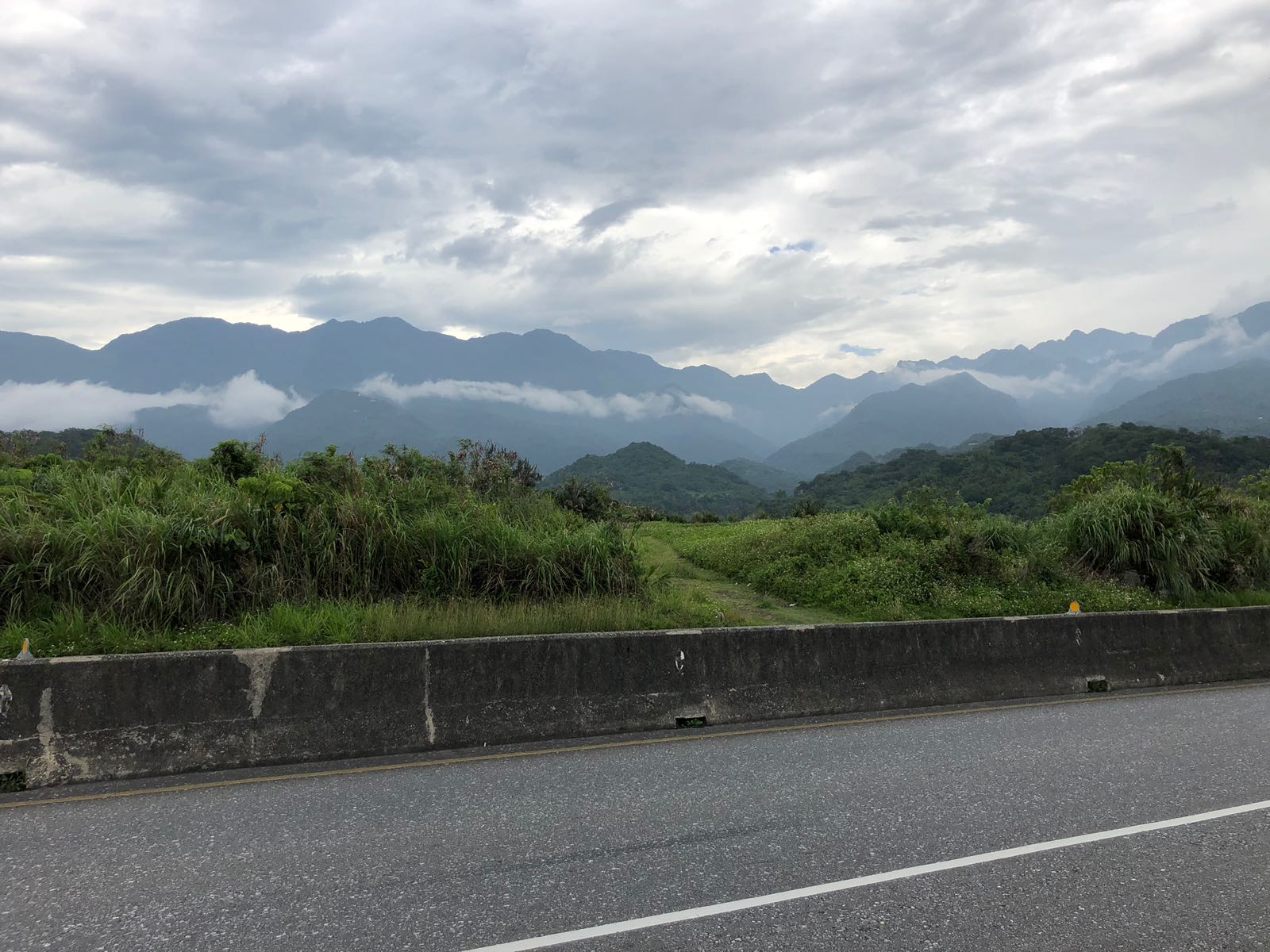
Day 14 (122km)
For those following along on a map, the Yan Hai Bo B&B is located in Xincheng. In the morning we gathered our things for our last big day of riding and geared towards Toucheng, just north of Yilan. The very same Yilan that played a central role in the police/towt ruck/paddy-wagon incident from earlier. Highway 9J is one of the more memorable rides in the entire country, skirting the upper reaches of the cliffs that tower over the ocean. During the latter portion of this days route, the coast flattened and our proximity to Taipei became apparent. Lone fisherman squatting effortlessly on jetties were replaced by small fish farms. No longer passing through tiny fishing villages, the setting changed to suburban/industrial fusion.
Not yet ready to be reacquainted with urbanization, we booked our last night in at the Rising Sun Surf Inn on Wai’ao Beach. The small pocket of Taiwan is still trying to figure itself out. The black sand beach is at least a kilometer long and abnormally wide, the waves ideal for surfing clash mightly with the cranes and new construction projects along most of the perimeter. Still, the beach’s seemingly second and third generation residents outnumbered the tourists and are holding their ground. Who knows what the imagery will be 10 years from now?
That evening we said our good-byes to Susie, bringing our pack to three. Funny that only two weeks prior, we didn’t know of each others existence. Now, it was like losing a member of the family. I’ve always wondered why faith in fellow humans develops quickly and without previsions when on the road. Is a need for connection, or simply the natural ability of like finding like. Whatever the answer, the people make the place, and the adventure wouldn’t have been the same with you, Suz.
Our final supper was one dumpl. Psych-out…we had skewers. Much like other Asian countries, a staple of street food in Taiwan is skewers of meat grilled and vegetables grilled to-order. Most cooks hand you a laminated paper with a dry-erase pen and allow the customer to mark how many of each item they want. It’s extremely efficient, as many of these menus are translated and helps when two speakers can’t intermingle.
And there we were, sitting on the street, plastic low-lying chairs beneath us, eating our skewers and sipping cold Taiwan Beer bought from two separate 7-11’s less than 500 meters from one another. Sea-water scented the air, the the low-clouds falling off the mountain moistened it.
Day 15 (99km)
The north shore of Taiwan somehow offered even more dramatic views than the east. We took lunch in Jiufen, a small village built into the mountainside some 30 km northeast of Taiwan. The main draw is Jiufen Old Street. This winding stretch felt like a never-ending night market that tunneled smack dab in the middle of the village. Tourist buses filed into the narrow streets and presented a soft introduction back into Taiwan’s thick of things. Taipei just out of eyesight one way, and the East China Sea insight the other.
Seas are fickle little monsters. Do currents adapt to landmasses or land to current? How does scenery change so quickly on an island? Would a handmade dumpling shop be successful in Denver? I’m hungry. Those rocks would be awesome to climb. Is Taiwan a first-world country? Are the people of these small fishing villages more content with life without the constant onslaught of emails and non-stop media? Where will we travel next year? OK, curvy mountain road, focus.
It’s easy to get lost in your own head on a motorcycle, especially when touring the unfamiliar. Thoughts flow rapidly as the air swishes by and the constant revv-roar of the engine bleeds from the machine. It requires unwaning attention to a point of liberation. The stream of consciousness ran rampant.
It epitomizes the joy of travel. Head on a swivel, wandering lost in a new world without complacency. Learning and wondering without passing judgement.
Oceans, mountains and valleys. And dumplings.
Taiwan.


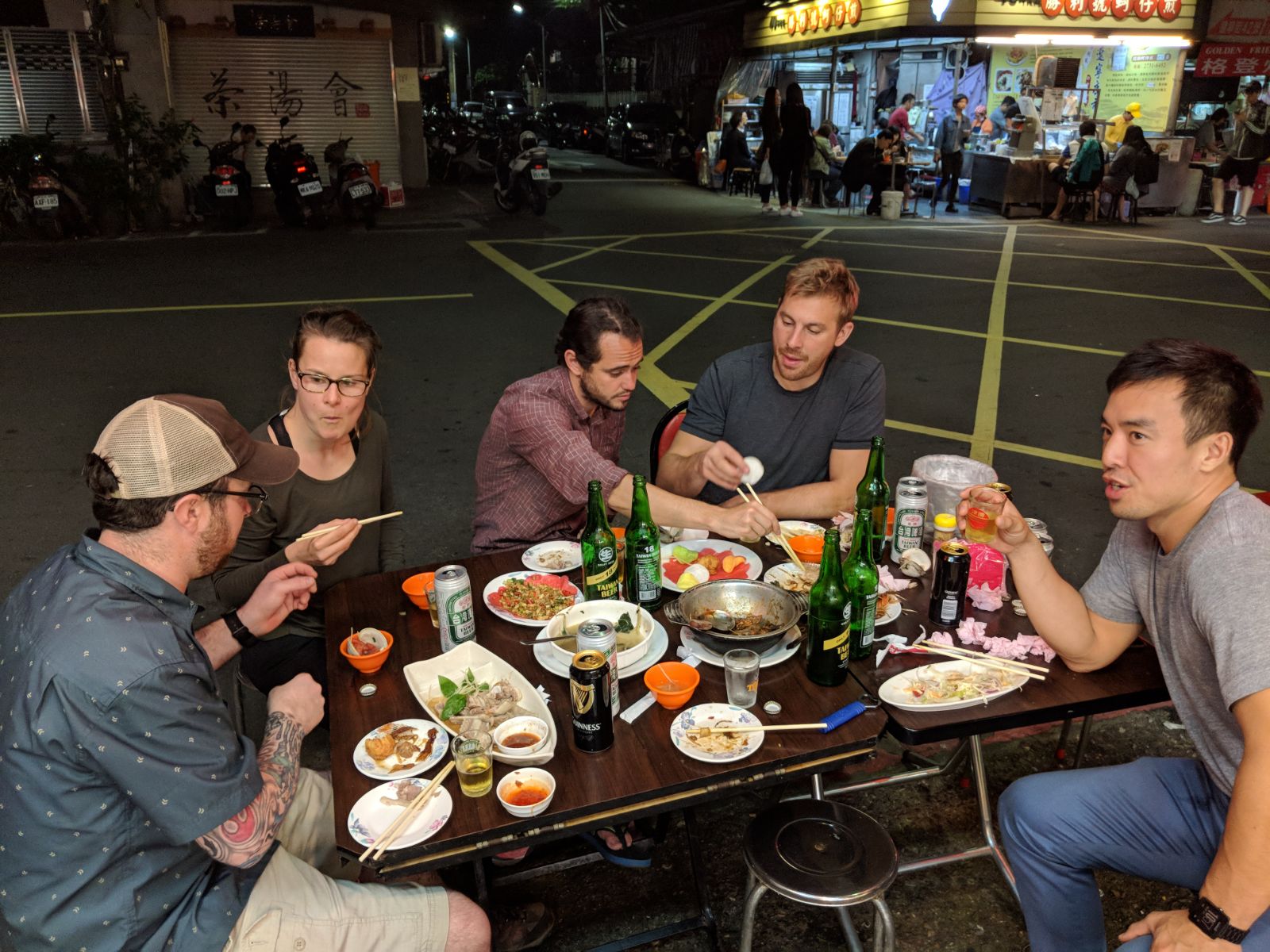

A great blog. I felt I was on the trip. Insightful comments about the joys and trials of travel and life were inspiring. To travel (not tour) is to learn, and to learn is to live!